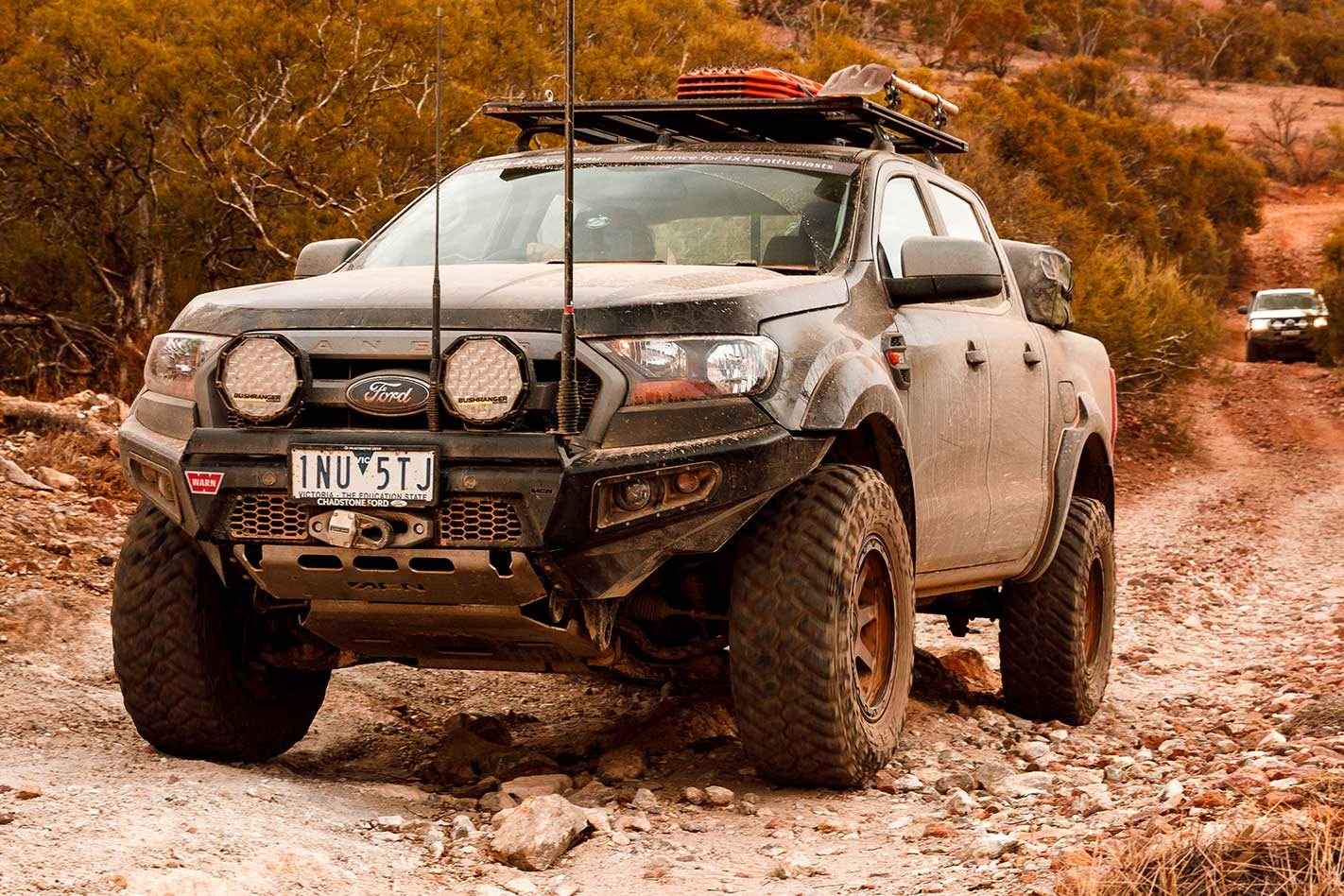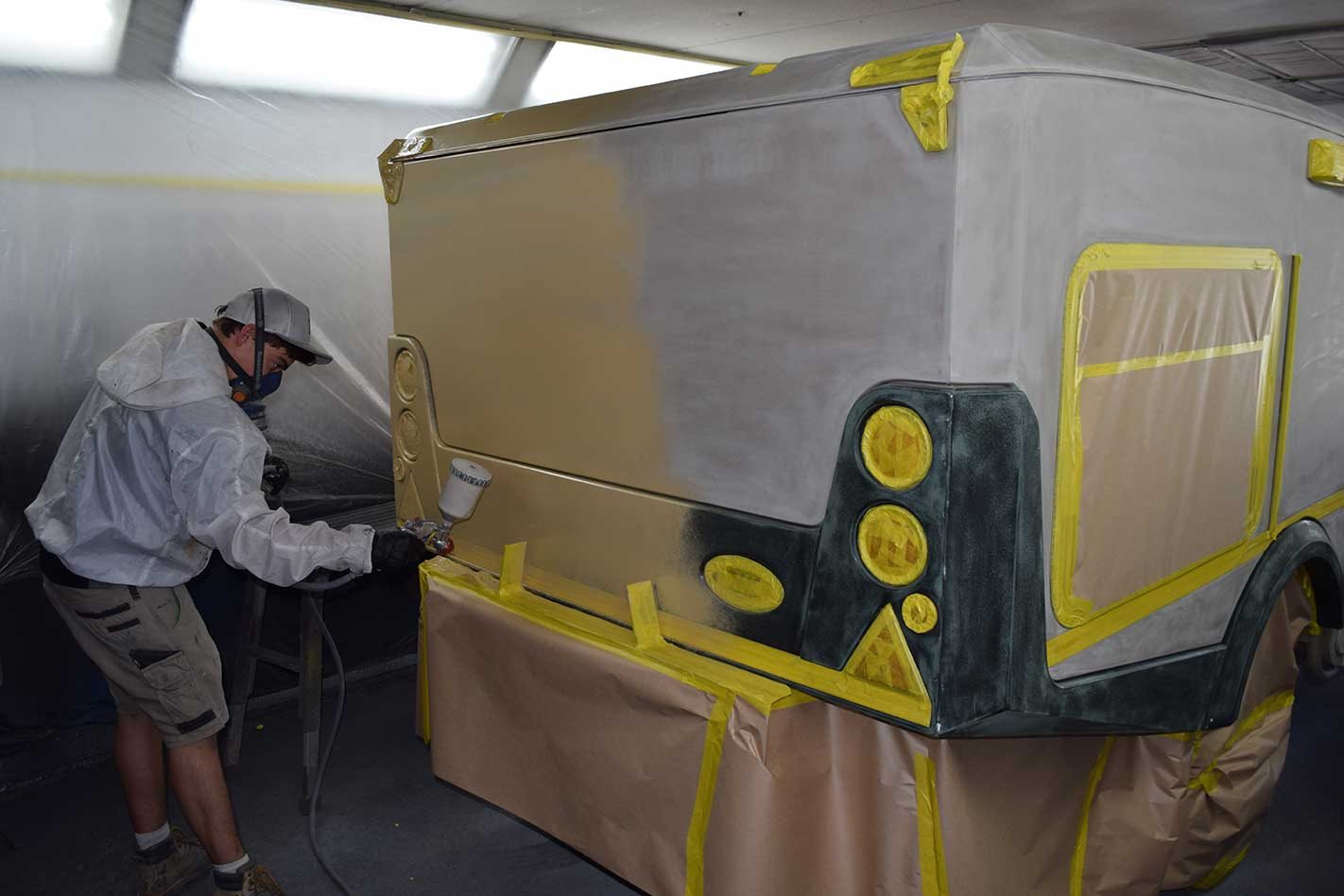There’s a lot to like about Toyota’s commercial-grade Land Cruiser 70.
Available as a cab-chassis, a five-seat dual-cab/chassis, wagon and big-bodied Troop carrier, it’s a solid, simple, tough and (almost) no-nonsense torquey turbo V8 workhorse that shoulders a load over arduous terrain like no other vehicle.
But there’s one glaring problem with the present model: the rear wheel track is narrower than the front. When Toyota replaced its six-cylinder engine with a new diesel V8 in 2007, it widened the body, chassis and front axle to allow room for the larger engine and to improve airflow and cooling. Toyota, however, retained the previous model’s rear axle and the result is a vehicle with a rear track 95mm narrower than the front.
It looks a little odd and, more importantly, it has noticeably compromised driving, handling and stability. A narrow track is fundamentally less stable than a wide one, especially when you load heavy and high – or when the vehicle is a quick-response emergency vehicle. And in some off-road conditions, such as sand or ruts, the inner edges of the rear tyres have to work harder, which results in an odd gait.
Multi Drive Technology in Geelong – the company responsible for the 6×6 Cruiser we showed you in August 2014 – has designed and manufactured a fix: the Tru Tracker. This clever Aussie conversion widens the Land Cruiser’s rear track to correct the front and rear track discrepancy and reduce or eliminate the handling and usage issues.
“We knew it was an issue,” MDT’s Tom Hawkes says of the track-challenged present-gen Cruisers. “We do a lot of equipment fit-outs (for fleets) and a lot of end users (drivers) were saying, ‘We love these vehicles, but they wobble around’. It was something that we only began hearing [about] with the newer models.”
What the company has come up with is a simple system of extension stubs, relocated bearings and longer drive shafts. Significantly, the design of the kit means the wheel bearings – now outboard in exactly the same position to the track of the tyre as the original – experience exactly the same loads as original. Axle-bending stresses, outboard and inboard of the spring saddle, are raised slightly, but remain within safe limits; an engineering fact checked by MDT with both FEA (Finite Element Analysis) and fatigue/stress testing.
The extension stubs are machined in-house from high-grade material (4140) and are a tight-clearance fit over the ends of the Toyota axle housing, after it is shortened to suit. The replacement axles are forged in Melbourne – with the splines machined by MDT – and even the high-tensile bolts are Australian-made.
Satisfying ADR requirements was the number one priority after getting the hardware right. As well as CAD design, extensive prototype testing was a big part of MDT’s development, including ADR requirements for lane change and stability tests. Registration requirements vary from state to state, but MDT provides the guidance and information required for pre- or post-registration paperwork Australia-wide through a dealer/installer network.
The axle housing remains in the vehicle during installation, saving time and labour – significant for fleet fitments where dozens of vehicles may be batch-processed in a short time – and making installation possible for keen DIYers with little more than quality tools and a set of chassis stands.
The necessary axle housing nose modification is performed with a hand-held angle grinder – MDT has even devised a way to keep swarf and dust out of the axle tube during cutting.
Hardware such as brake backing plates, handbrake cables and ABS wiring all remain standard Toyota, but moving the hub components a couple of inches outboard means longer hydraulic brake lines, handbrake cable extension links and re-routed wiring – all accommodated for by MDT. Every aspect of the conversion process is covered by MDT, it even includes Loctite and a pair of brake line clamps in its package for hassle-free fitting.
The result? For around $3500 the Cruiser has its track corrected with a 100 per cent legal and durable conversion. For both commercial use and for those wanting to build the ultimate remote-area tourer, MDT’s Tru Tracker conversion adds extra loaded stability and allows the Cruiser to literally drive straight over the problem of trying to follow two sets of ruts off-road, not one! While our photos show it fitted to the 6×6 Scorpion, the Tru Tracker is suitable for any 4×4 VDJ 70 Series Land Cruiser.
WHY NOT SPACERS?
The CHEAP and cheerful way of correcting the track on Land Cruisers – and many other vehicles over the years – has been to install bolt-on wheel spacers. A thick chunk of alloy is bolted to the original wheel studs and new studs are screwed into the alloy spacer.
This is illegal, however, and for good reasons. The extra load on wheel bearings and wheel studs, due to the increased leverage of the track, makes them more likely to break. There are restrictions on altered wheel offsets, too – the wider track with a rim change stresses studs and bearings. Any more than 25mm each side – or a 50mm overall track increase – and you can expect a ticket.
MDT’s conversion widens the Land Cruiser’s rear track using a method that is tested, legal and acceptable to private and recreational rigs as well as government and corporate fleets.
CONTACT
For more info, phone MDT on (03) 5278 5300 or visit www.multidrive.com.au. The company also does 6×6 conversions, GMV upgrades and chassis extensions for Land Cruisers.




